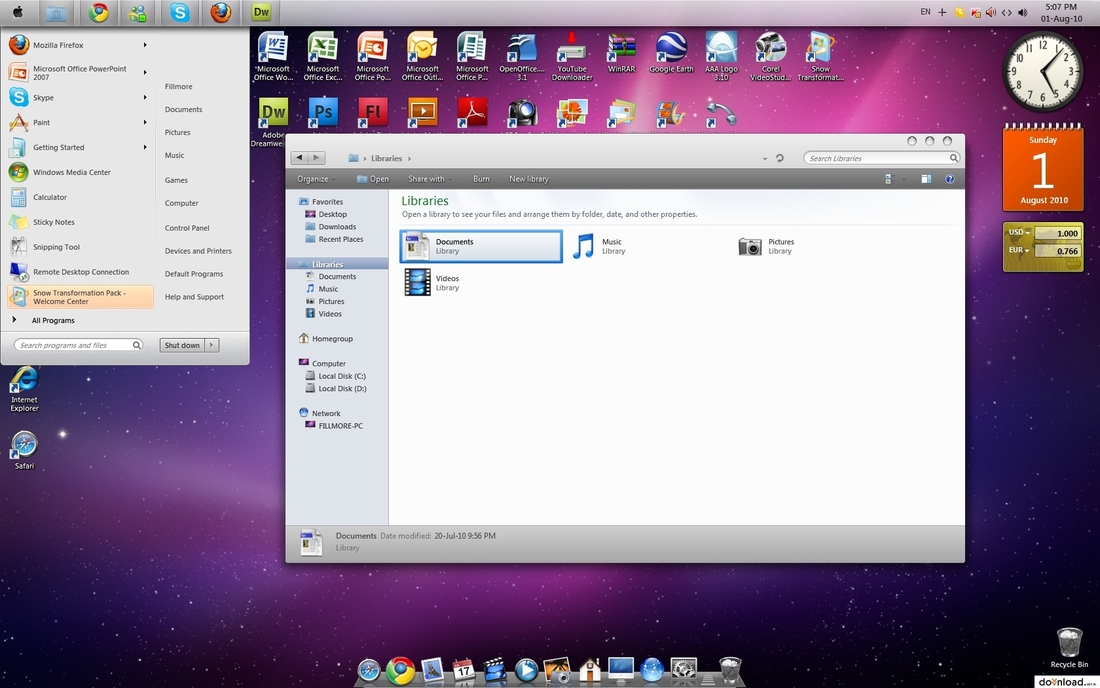Mac Os X Snow Leopard 32 Bit Iso
Mac OS X Snow Leopard is a major release of Mac OS X for Apple servers and desktop Macintosh computers. This is a free download for Mac OS X DVD in.DMG format. It can also be made bootable. Mac OS X Guest Snow Leopard 10.6.4 on PC with VirtualBox 3.2.6 – on Windows 7 32 Bit Last updated on February 21, 2011 by Dinesh Latest Oracle VirtualBox 3.2.6 is missing Mac OS X as guest and it supports only Server version.
He soon finds, however, that the wizarding world is far more dangerous for him than he would have imagined, and he quickly learns that not all wizards are ones to be trusted. Harry potter download full movie series harry potter and the prisoner of azkaban cursed child sirius black potter and the deathly chamber of secrets wizarding world harry. Harry potter movies series in hindi free download hd.
The short answer is that Leopard is a mix of 32-bit and 64-bit. • Tiger added 64-bit support for low-level system libraries, enabling 64-bit for non-GUI applications. • Leopard added 64-bit support throughout the system frameworks, so any app can be 64-bit. • Snow Leopard will add a 64-bit kernel and many 64-bit user applications shipped by Apple.

The 32-bit versions of all the frameworks and libraries are of course still available, but running apps in both modes requires both stacks to be loaded, which is inefficient, and a big reason why Apple is strongly encouraging developers to get on the boat and build their apps with a 64-bit version. Because the kernel in 10.5 is still 32-bit, the greater amount of addressable memory is achieved with some trickery. The exact details evade me at the moment, but I think that under Leopard you can only address 4 GB of physical memory — I believe the 64-bit memory space spills over to virtual memory on disk, just like when 32-bit processes exceed the amount of installed RAM. Edit: I was incorrect about the virtual memory aspect. The 32-bit kernel can address more than 4 GB of memory, but adding lots of physical memory uses up a good chunk (~ 1/3) of the kernel's 32-bit memory space, which (at the limit) can decimate kernel performance. Obviously, if your application uses more memory than is available (either in 32-bit or 64-bit mode), the OS must map virtual memory. Among other things, the 64-bit kernel in Snow Leopard provides breathing room in the kernel itself by vastly increasing the address space it can use, including for describing physical memory.
Most people aren't running into that limit yet, but they will start to as installed RAM increases in the near future.
I’ve taken the plunge and installed Snow Leopard (aka Mac OS X 10.6) and was pretty psyched about the fact that it’s a 64-bit operating system, until my brother said “yeah, but I bet you’re still running in 32-bit mode”. How can I tell if my Snow Leopard computer is now running in 32-bit “compatibility” mode or as a true 64-bit operating system? Before we go further, realize that the majority — if not the vast majority — of people running Mac OS X 10.6 Snow Leopard are running in 32-bit mode. In a lot of ways, I think that the 64-bit capability of the operating system is there for future growth of the platform, not because your iMac or PowerBook can handle it (or needs it, for that matter).
For an operating system that Apple has said is all about fixes and tweaks, there’s actually rather a lot of new stuff that shows up, and a lot of code has been rewritten and enhanced without much fanfare. One example that’ll be critical for our needs is the Activity Monitor, which you can find in “Applications” –> “Utilities”.
Launch it and you’ll see something like this: Notice the “Kind” column. As you can see, some programs run in 64-bit mode, while others run in 32-bit mode, approximately 50/50 on my computer. Third party apps, like Adobe Air (which runs Seesmic Desktop) and Microsoft Entourage run as 32-bit applications, no surprise there. But if you look closely, you’ll see that iTunes is also still a 32-bit application. Hmmm I expect that to change fairly soon!

This doesn’t show you whether you’re running in 32-bit or 64-bit mode, though, so to ascertain that you have to go through a slightly different hop click on the “Apple” menu and choose “About This Mac” then click on the “More Info” button. This will launch “System Profiler” and if you look down the left side you’ll see the major categories of “Hardware”, “Network” and “Software”. Click on “Software” and if you’re running in 32-bit mode, you’ll see this: See that line “64 bit Kernel and Extensions”? The value “no” means that you’re not running in 64-bit mode. Now, try rebooting and forcing 64-bit mode by holding down the “6” and the “4” key during boot. There’s not much you’ll see different when you’re running this way, but if you navigate to the same area in “System Profiler”, you’ll now see this: You can also tell if individual apps are 64-bit capable by using the good ole’ “Get Info” command. A 32-bit program that can’t run in 64-bit mode will look like this: By contrast, a 64-bit friendly app shows this: The key is near the bottom: “Open in 32-bit Mode”.
One final thing to show you: If you do boot into 64-bit mode, go back into Activity Monitor and you’ll see a funny thing: That’s right, even in 64-bit mode, you’ll find that much of your system is running in 32-bit mode anyway. Ah well, now you know. Should you care? Probably not.